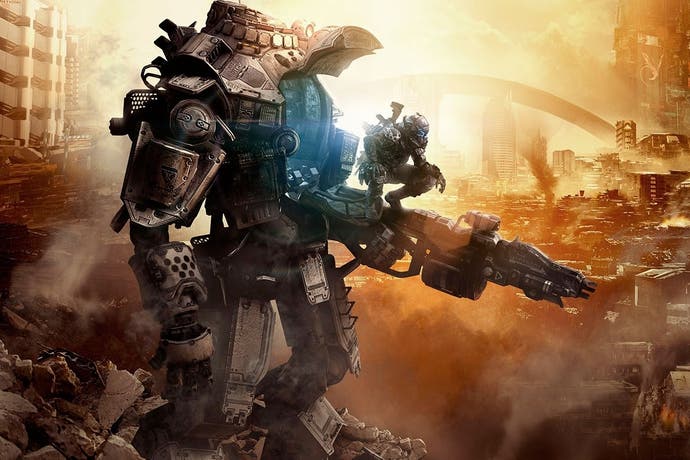Next-Gen Face-Off: Titanfall
Battle royale.
A lot rides on the success of Titanfall. For Respawn Entertainment it is the culmination of four years' hard work - the first project that many of the team has shipped since the release of Modern Warfare 2 in November 2009. For Electronic Arts, it's a chance to redeem something from its lacklustre EA Partners endevour, while the game represents Microsoft's biggest hope in regaining momentum and catching up with the PlayStation juggernaut. In our opinion, Titanfall is a stand-out game that must be played - but Xbox One is perhaps not the best platform to play it on.
Image quality-wise, you might consider Titanfall as something of a "lo-fi" game in an era where technological innovation is defined by ultra-sophisticated engines like those found in Battlefield 4 and Killzone: Shadow Fall. Respawn has taken the Source engine and modified it extensively, but in our conversations with the developer, the overall impression we came away with is that the essence of the technology was updated for the next-gen era while the overall focus remains much the same. Respawn's focus appears to be about making more happen at 60fps, rather than rewriting the book on lighting or detail levels.
There's more of a sense that Source has been repurposed to suit Respawn's ideal for great gameplay - lower-latency controls, for example - rather than what we would define as cutting-edge rendering. It's a considerable risk for a brand new IP designed for the next-gen era, and one that would only have been contemplated by the authors of the modern first-person shooter.
Bearing in mind this particular focus, it should come as little surprise to see that Titanfall's assets and rendering properties are almost a complete match between Xbox One and PC. The console gains access to the "insane" texture quality levels of the computer version - which requires a 3GB video card to run smoothly - and aside from an "only noticeable in still shots" downgrade to shadow quality, most of the rendering assets are very close indeed between both versions.
"A 792p resolution is a clear compromise on Xbox One, but aside from that, asset quality is mostly a match for the PC version at its best. The same can't be said for performance, however."
High quality download: Host/Mirror (right-click, save as), Torrent
The headline differences are nothing new - the Xbox One version of Titanfall still operates at a modest 1408x792 resolution, with 2x multi-sampling anti-aliasing, whereas the PC game runs at any resolution you care to mention, with support for hardware anti-aliasing. You get access to 2x and 4x MSAA, while owners of Nvidia cards have access to a raft of CSAA options up to 16x (used for our comparison shots).
The only other major difference is a skewed gamma ramp on Xbox One, introducing black crush into the image, robbing it of some of the subtle detail you see in the PC game. We understand that this could be an issue in how the Xbox One blends its multiple display panes and would be more of an issue in upscaled games, and we're quite surprised that Microsoft hasn't sought to address this yet.
The 792p resolution on Xbox One is a curious one. It's a 21 per cent increase over 720p, and the use of multi-sampling anti-aliasing makes it punch a little above its weight in an era where the more usual post-process AA can actively harm image quality at lower resolutions (as seen on Battlefield 4 on Xbox One). However, when we first saw Titanfall, we were pretty certain we were seeing 720p or something close to it (1366x768 perhaps). We remain curious about why Respawn would choose this particular framebuffer size, as that additional 21 per cent of resolution isn't giving us a boost in quality commensurate with the GPU resources being allocated to it. The question is, could that graphics power have been better deployed elsewhere?




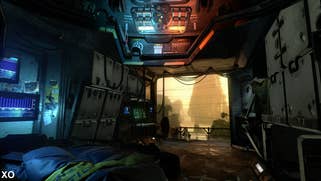

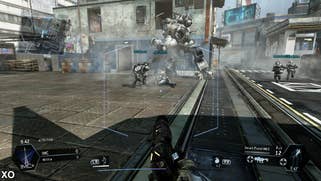
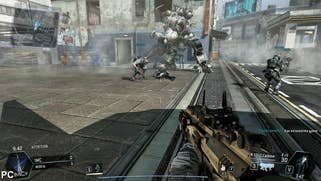
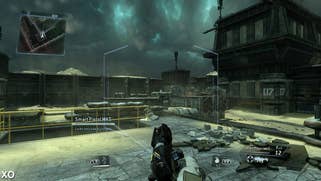
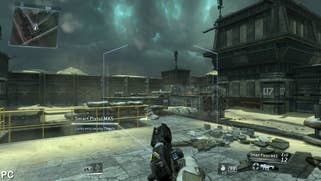
In our Respawn tech interview, we showed you how Titanfall looks on Xbox One compared to 900p with FXAA and 1080p with no anti-aliasing. In the comparison below, we've re-run that gallery with another variable added - 720p with 2x MSAA. That's a straight resolution downgrade compared to the Xbox One launch code, but the idea here is simple: in the tech interview, Respawn talked about lowering pixel count as well as increasing it. We wondered what additional hit we would see from 720p compared to the shipping 792p?
The reason we ask is fairly straightforward. Titanfall is a game that thrives on a 60 frames per second update, and as we'll swiftly discover, the fact is that it doesn't quite deliver on Xbox One. Now, as we recently discussed, in many engines there is no linear relationship between pixel-count and frame-rate, but based on the performance of the Xbox One game, we can't help but feel that it's a trade that should have been made. The more resources dedicated to frame-rate, the better.
This is far from the end of the story though. There is more to come for Xbox One owners, through a combination of optimisation and help from Microsoft. Lead engineer Richard Baker told us that once the GPU system reservation time-slice is in the hands of developers, we would see a proportionate rise in resolution, but it's our contention that frame-rate really is the priority right now. Especially for Titanfall with its fairly lo-fi assets, how it plays is so much more important than the amount of pixels it renders.

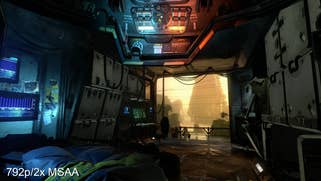

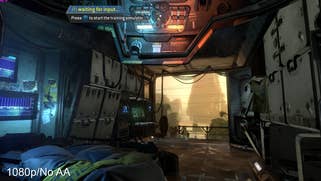
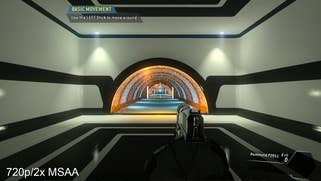

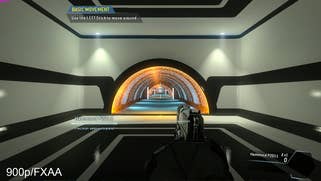
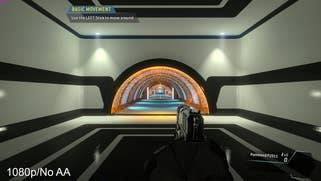
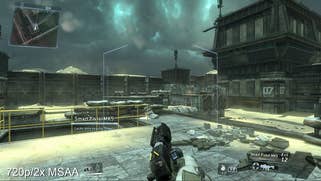

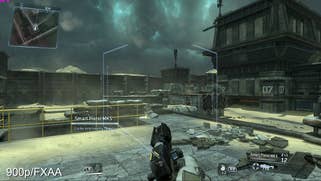


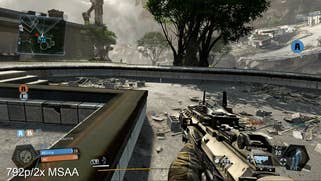
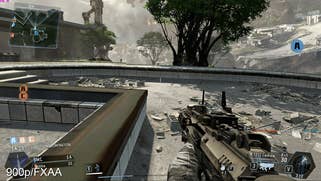
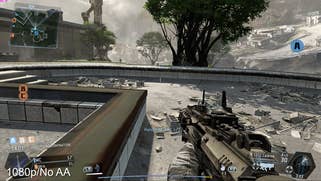
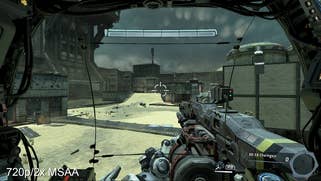
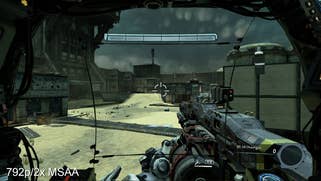




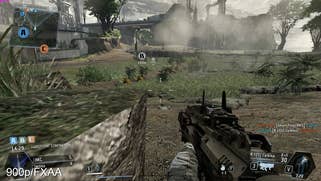
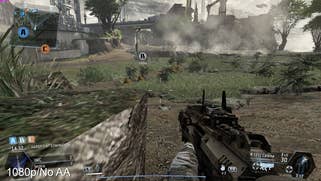
All of which leads onto the biggest single difference between the PC and Xbox One versions of Titanfall - performance. Back in the day, Infinity Ward - staffed by many of the Respawn team - crafted the most remarkable first-person shooter engine of its era. Modern Warfare handed in state-of-the-art visuals, but it did so running at 60 frames per second with v-sync enabled. This is one part of the magic formula - an arcade-style presentation if you like, rendered with modern 3D graphics. This in turn opens the door to super-fast, low-latency controls, that define the feel of the game.
There's been plenty of talk about Titanfall's sub-native resolution, but while that is not exactly ideal, the biggest problem we have with the game in its current format is that the magic combination of ingredients that made Modern Warfare work has come slightly off the boil here: the Xbox One version simply cannot sustain the required 60fps. The consistency in performance just isn't there and so the gameplay often doesn't feel quite right.
Faced with the challenge of being unable to sustain 60fps, Respawn has two choices: it can retain v-sync and face increased judder and loss of response in the controls (the solution chosen for the less capable PS3 version of Modern Warfare). Alternatively, it can utilise adaptive v-sync - locking at 60fps, but tearing beneath. While image integrity is shot to hell, at least the results of your controller inputs are rendered on-screen as quickly as possible, meaning that the hit to the gameplay experience isn't quite so pronounced. The latter is the route Respawn has chosen.
On balance, it's probably the best choice, but we do note that when v-sync is inactive, a lot of the action isn't being delivered on-screen in a consistent manner - you can see that in the frame-time element in the video below. In essence, in addition to torn frames, there's noticeable judder and a less than solid response from the controls - especially evident when you're in the Titan. We also note that sometimes the engine stalls for a couple of frames, producing the big spikes downward in the frame-time graph.
So, just like the beta, we see Titanfall frame-rates on Xbox One dip into the mid-30s at its worst, and at those points the rock-solid consistency we saw in the early iterations of the Modern Warfare experience is gone, and with it - arguably - the essence of the "twitch" shooter. In mitigation this does tend to happen while you're seated in your Titan, so the need for ultra-low latency controls is lessened, but there's no doubt that the player's immersion in the experience is dented by the compromised performance.
Respawn's adaptive v-sync decision works out OK for general, on-foot pilot gameplay but there's still too much of the 'adaptive' and not enough of the 'v-sync', resulting in an obvious tearing that impacts visual consistency. However, the effects vary: with little in the way of left/right panning, it manifests almost like a 'wobble' - noticeable, but nothing that unduly affects the quality of the gameplay. However, in the middle of pitched battle, with the player spinning around to tackle new threats, the tearing is very obvious and highly distracting.
Titanfall has been hit over the head repeatedly this week by comments quoted from Giant Bomb, describing a particular instance of single-digit frame-rates in the Last Titan Standing mode, which kits out every player with a Titan and lets them 'have at it'. On the one hand, the report potentially has some merit - this mode is likely to push the game engine to its limits. On the other hand, this engine is designed to pump out a new frame every 16ms. Clearly it doesn't always manage it, but a drop down to single digit frame-rates would necessitate that engine taking 100ms to render the next image - an enormous amount of time. So does the Last Titan Standing mode really hammer frame-rates as badly as suggested?
"Titanfall has clear performance issues on Xbox One, but it's still a fun experience. However, when playing on PC, the fluidity in refresh, response and control is leagues ahead."
Well, we put some time into this and didn't spot any single-digit frame-rates, but this is clearly a great way to stress-test the game, and we can well imagine that if all 12 Titans were let loose in a confined space, frame-rates could plummet to a noticeably unacceptable level.
The real issue we have with this game on Xbox One is that playing Titanfall on Xbox One appears to be a case of taking the hits wherever they come from, and hoping that the core gameplay experience isn't impacted too much. By and large it works out acceptably, and the sheer fun of playing it can't be denied. However, the outlook changes appreciably once you play the game on PC, where - hardware permitting - performance is just so much better. At that point, you can't really go back. It's not difficult to get an experience that easily outstrips what's offered by Xbox One with hardware that needn't cost the earth.
We ran the game on our recently constructed "next-gen" Digital Foundry PC, pairing a six-core AMD FX-6300 with a GeForce GTX 760. Texture quality needs to drop to very high, but otherwise, everything is on max and we can hit 1080p60 with lashings of anti-aliasing, but the performance level is not sustained - but still a clearly noticeable improvement over Xbox One. Frame-rates were OK overall, but it's a little sobering that the same machine achieves a higher overall performance level on Battlefield 4 on high settings. We also tried our high-end games machine featuring an overclocked Core i7-3770K matched with a GTX 780. At this point we could run Titanfall on insane texture settings with maximum anti-aliasing with just occasional stutter at 1080p, but we lost the 60fps lock when ramping up the resolution to 2560x1440.
Spec requirements are also very stringent in some respects. The 3GB of GDDR5 required on your GPU for the insane texture setting lives up to its name, bearing in mind that the actual quality of the assets are nowhere near the likes of Battlefield or Crysis 3. Respawn talks about texture streaming potentially resulting in pop-in, but we suspect that this is probably more to do with the tech required not being a part of the Source engine. The uncompressed audio situation is similarly bizarre. The 48GB install is actually bigger than that - it's just a few megabytes short of a full 50GB, and we can't quite get our heads around the notion of 35GB of uncompressed audio sitting on the hard drive.

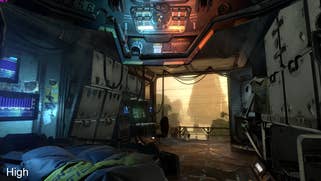
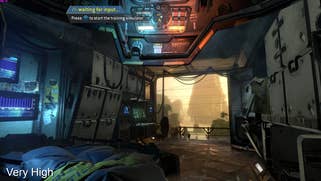
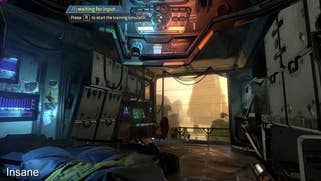
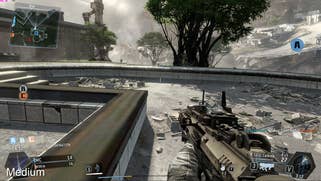

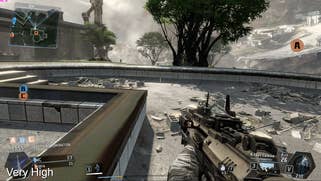
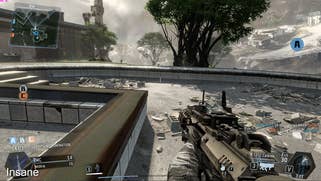
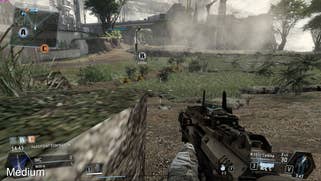


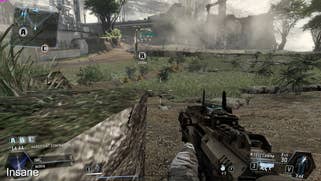

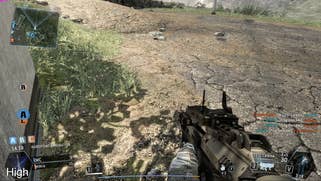

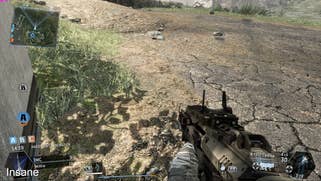
Respawn's explanation of accommodating dual-core CPU users might make more sense if we'd heard of any other game using this technique, or if MP3 decoding wasn't as cheap as it is (for reference, a single PS3 SPU can decode 300 MP3s simultaneously). Practically, while 35GB may not sound like much of a big deal in an era where a 1TB drive is almost £40, it is a clear concern for gamers who use SSDs instead, where the gig allocation is much more of an issue. We still don't quite understand why it couldn't have been an optional install element - the Xbox One game is around 17GB in total, and that features compressed audio.
Titanfall: the Digital Foundry verdict
When we spoke to Respawn producer Drew McCoy at Gamescom last year, we were fully onboard with the "frame-rate is king" response when we asked about the possibility of 1080p60 on Xbox One. The key to the best Titanfall experience is all about the frame-rate - it's a crucial element of the interface between player and game and it's a core element in defining the gameplay. The end product is still a massive entertaining, highly playable piece of software, but on Xbox One at least, the performance level clearly isn't anywhere near locked to the magic 60fps, with Respawn sailing dangerously close on occasion to nerfing the the magic formula that makes this game great.
By and large, when you need the signature twitch-levels of response, Titanfall delivers, but it does so at a price - eye-rending screen-tear. That's a compromise that the erstwhile-Infinity Ward team members never implemented during their run on Modern Warfare and we were surprised to see it manifest so obviously here. As a result, the pure thoroughbred arcade experience that defined Call of Duty and is instrumental to Titanfall's success is left somewhat compromised, with a level of visual artefacting that frequently looks plain ugly.
To be clear though - while this is an easy win for the PC, any Titanfall purchase is still a good one. Respawn's focus on technology to facilitate fun as opposed to pushing back the frontiers of rendering has paid off, and while the Xbox One game has its issues, there's no doubt that the experience is enjoyable. However, from everything we know about the studio and what it sets out to achieve with its games, we can't help but feel that Xbox One under-delivers while the PC game is much closer to the experience the developers set out to create.
